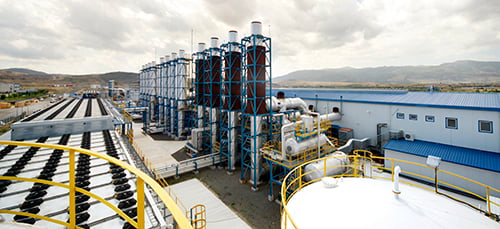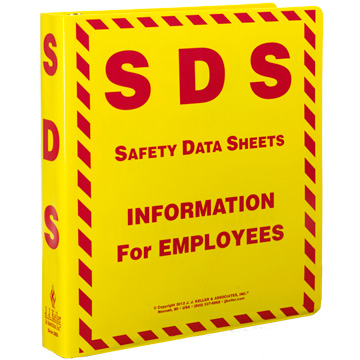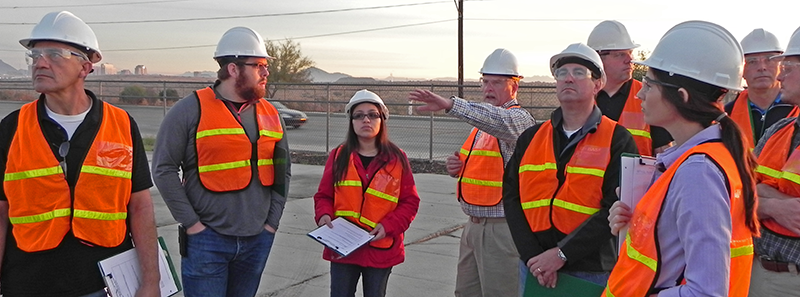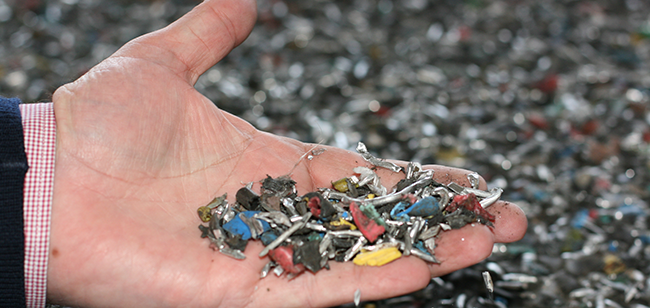Toxic Release Inventory Reporting is starting to heat up across the country. More facilites then ever are reaching out to learn what it is, if their facility should be reporting, and what kind of trouble they could be facing for not reporting.
Almost every conversation we have with facilities about Toxic Release Inventory Reporting begins the same way. First, they've never heard of it. Second, they think it doesn't apply to them. Last, they realize it does, they haven't done it, and get real nervous. It seems every year there are more and more people contacting us.
It all starts with someone calling and asking us what is TRI Reporting?
Well, it's somewhat of a long and boring answer, so I'll try to shorten it up for you. It's a very important question to start asking now, since it takes some time to get everything together, reporting isn't too easy, and making mistakes can really damage your operation (like huge financial fines and being a local news headline).
The boring part is this, TRI, shortened for Toxic Release Inventory Reporting, is a regulatory requirement of the Federal government that requires industrial facilities that manufacture, process, or otherwise use a fairly substantial list of hazardous chemicals conduct annual reporting on what they have, use, and how it can be released to the environment. These reports become public record, and help the government keep tabs on who's polluting the most, and what they're releasing.
And just to be clear, this can also be called other things, like Section 313 Reporting, or Form R Reporting. We get a bunch of different names for it, but most folks call it TRI.

What are TRI Reporting Chemicals?
This is the part where you go "well I don't have any toxic chemicals at my facility", right? Well unfortunately you're probably wrong. The list of chemicals is all encompassing, and is applicable at thousands of facilities all across the US. There are over 600 chemicals listed that are common in hundreds of thousands of products and materials you might be using right now at your facility.
And the thing to note is these chemicals that need to be reported on are usually not present in their pure form. Normally these chemicals are present within materials or products, and you might not even be aware of them. Unfortunately for you, the EPA doesn't accept that and will penalize you anyway. You really have to look into what you use at your site.
What are TRI Reporting thresholds?
Just because you use a product with a nasty chemical in it doesn't automatically mean you have to do Section 313 Reporting. For the vast majority of chemicals, you need to manufacture, process, or otherwise use between 10,000 or 25,000 pounds of the chemical over the course of the calendar year.
So if you use a material which is 10% lead, you'd need to use 100,000 pounds of that material over the course of a year to trigger reporting because lead is a chemical with a 10,000 reporting threshold. For many facilities, this isn't as hard to hit as you'd expect.
But, there are some specific chemicals on the list with very low reporting thresholds, such as 100 pounds or even less. Don't think you necessarily need to have or use a lot of a certain product to trigger reporting. It all depends on the specific chemical.
You really, really need to look into the material you use a lot of at your facility. What's it made of? You have to find out. Saying I didn't know, or it wasn't on my SDS doesn't cut it, especially if it's common knowledge. You can't play dumb on this one guys. The EPA isn't messing around.
When you finally figure out what you have onsite, you have to report on these chemicals. You have to provide estimates of things like how much is present on your site, if any is released to the environment and if so where or how. You'll have additional requirements like how much is recycled, how much becomes waste, etc.
When do I do TRI Reporting?
It’s done annually, and it's due July 1st of every year. It's all done online, and it can be somewhat tricky to do the first time, since you really have to do a very thorough job of looking at the chemicals, materials, and processes on your site. After the first year, it gets a little easier, but you still have a lot of work to do.
What TRI Reporting is not.
Toxic Release Inventory Reporting is not the same as Tier II Community Right to Know Reporting. They're not the same at all. Don't confuse them. Doing one does not count as doing the other.
Just to really make it confusing, Tier II Reporting is sometimes known as Section 311/312. Don't confuse this with TRI Section 313 Reporting.
It's as daunting and serious as it may sound, and isn't just for chemical companies, petroleum refineries, or hazardous waste processors. We find that more facilities should be doing it than not, and if you've never checked into it before, you could be playing with fire.
I don't want to do Section 313 Reporting, whatever it is.
It sounds like a ton of work, and it is.
If you don't want to do it, by all means, take your chances. If I was in your shoes I would not take this lightly. I encourage everyone to at least figure out whether they should do it or not. I tell people all the time you cannot afford to ignore this.
The penalties for failing to report are extreme. They're just about the highest monetary fines the government can hit you with for environmental infractions. They can (and regularly do) charge you per facility, per year you've been failing to conduct reporting. So if you have 25 plants across the country and haven't done any reporting in 15 years, you could be facing 375 violations, each for tens of thousands of dollars. Can you afford a 10+ million dollar fine?
Another huge risk is getting sued by third party environmental watchdogs. You think getting a 9 million dollar fine from the EPA is bad, imagine getting a 30 million dollar fine, with extreme stipulations and requirements from someone like the local water-keepers. Are you willing to gamble with such extreme penalties? If it was my job or company on the line, I wouldn't take the chances.
Get the message?
Even if you think you don't have to report, find out for certain. Have a professional who knows what they're doing take a look at your processes. Ask your trade association. Find out sooner rather than later. You'll know if you need to report, what you need to do, and even your best course of action if you determine you should have been reporting in the past. If you're unsure about the need to do Toxic Release Inventory Reporting, or facing fines, violations, or lawsuits for failing to report, click here to contact us or give us a call at 609-693-8301 to discuss how we can help with your reporting needs.



